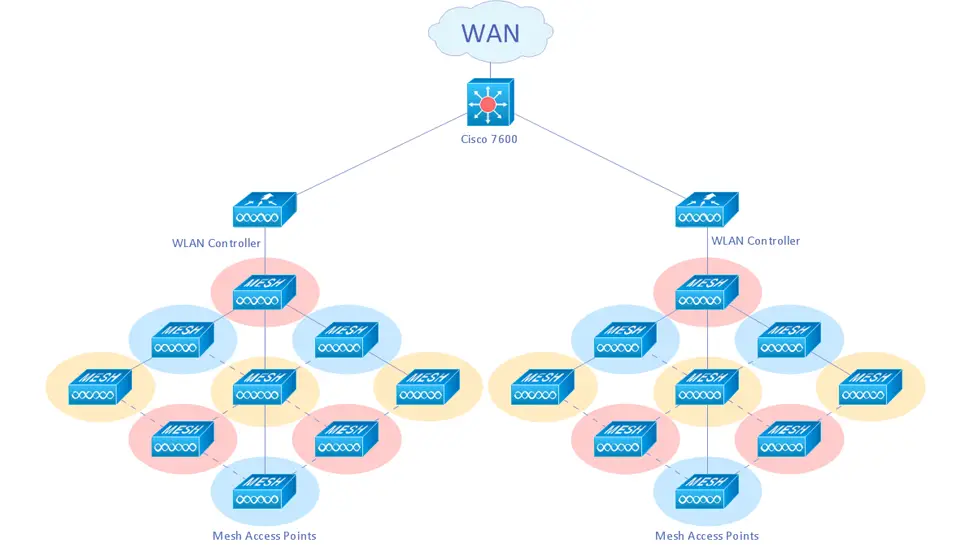Wireless Mesh Networking (WMN) is a type of wireless communication network that uses a mesh topology to connect nodes in a network. The nodes in a wireless mesh network are interconnected and communicate with each other to form a network that can cover large areas. This type of network is becoming increasingly popular due to its many advantages, including high reliability, scalability, and ease of deployment.
Contents
- Recommended Mesh Systems
- How Wireless Mesh Networking Works
- Advantages of Wireless Mesh Networking
- Range and Signal Strength
- Conclusion
- See Also
- Further Reading
Recommended Mesh Systems
I can highly recommend these Wireless Mesh Systems for home or small business.
- TP-Link AX3000 Whole Home Wi-Fi 6 Mesh System Deco X55 Pro
- TP-Link Deco WiFi 6 Mesh System Deco X20
- NETGEAR Orbi 970 Series Quad-Band WiFi 7 Mesh Network System RBE973S
How Wireless Mesh Networking Works
In a wireless mesh network, nodes communicate with each other to pass data between the nodes. Each node acts as a router and can relay data to other nodes in the network. This allows for a more flexible and reliable network that can easily adapt to changes in network conditions. The nodes in a wireless mesh network can be mobile or stationary, and they can be connected to the network via Wi-Fi, Zigbee, or other wireless technologies.

Advantages of Wireless Mesh Networking
- Reliability: One of the main advantages of wireless mesh networking is its high reliability. Because data can be passed from node to node, if one node fails, the network can still function by routing data through other nodes.
- Scalability: Wireless mesh networks can easily be expanded as the need for additional nodes arises. This allows for a scalable and flexible network that can adapt to changing needs.
- Ease of Deployment: Wireless mesh networks are relatively easy to deploy, as they do not require a wired infrastructure. This makes them ideal for remote or hard-to-reach areas where traditional wired networks are not feasible.
- Cost-effective: Wireless mesh networks are often more cost-effective than traditional wired networks, as they do not require the installation of a wired infrastructure.
Range and Signal Strength
The range and signal strength of a wireless mesh network depend on several factors, including the type of wireless technology used, the number of nodes in the network, and the environment in which the network is deployed. In general, a wireless mesh network can cover large areas, with a range of several kilometers. The signal strength of a wireless mesh network is generally good, as data can be passed from node to node, which helps to improve the overall signal strength of the network.
Conclusion
Wireless Mesh Networking is a flexible and reliable communication network that offers many advantages over traditional wired networks. With its ease of deployment, scalability, and cost-effectiveness, wireless mesh networking is becoming increasingly popular for both commercial and consumer applications. If you’re interested in learning more about wireless mesh networking, there are many resources available online (links below).
See Also
- A Comprehensive Tutorial on Wi-Fi: How It Works, Protocols, Security, Range, and History
- TCP/IP Protocols: A Short Guide – Learn the Basics
- Computer Network Firewall
- Build a Raspberry Pi Wireless Access Point


Comments
There are currently no comments on this article.
Comment